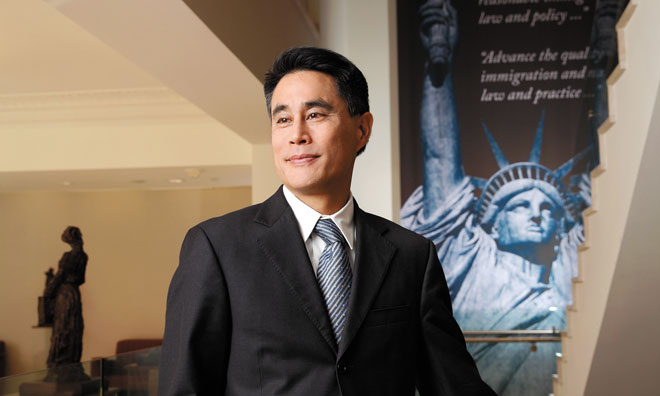
Ready To Run: Government Relations in 2016
The 2016 race proves that political campaigns are more full of surprises than ever. In response, association government relations strategies need to be nimbler and better prepared to leverage every advocacy opportunity.
The 2016 race proves that political campaigns are more full of surprises than ever. In response, association government relations strategies need to be nimbler and better prepared to leverage every advocacy opportunity.
The current presidential election cycle has trumped the ones that have come before it.
Forgive the pun. But there’s little question that the arrival of real-estate mogul Donald J. Trump in the GOP field has upended expectations of how a typical campaign functions. As an independently wealthy celebrity, Trump doesn’t have to struggle for funding or name recognition. And, as of press time, he’s seemingly girded with industrial-strength armor that repels controversies that would stop any other candidate.
That last point is critical for associations, says Robert Hay Jr., CAE, former executive director of the Association of Government Relations Professionals (AGRP). Trump’s willingness to say anything and keep going means associations must be more prepared to respond to issues that might affect them.
“I think that’s an opportunity and a challenge for associations, because when he does say something he gets attention,” Hay says. “Associations and GR folks have to be ready.”
But, in most ways, the advent of the Trump Era of campaigning has little to do with Trump himself. In a broader sense, GR professionals agree, today’s politics—noisy, always on, hyperpartisan—offer a lesson that, regardless of the candidate du jour, associations need to be more flexible, plan further ahead, and create more opportunities to encourage and mobilize grassroots supporters to get heard.
Taylor West, deputy director of the National Cannabis Industry Association, knows firsthand the value of seizing the political moment. NCIA was founded in 2010 to support the ranks of legal growers and sellers who’ve emerged in the wake of state- and municipal-level marijuana-legalization efforts. As legalization expands, the association has gained a legitimacy it previously lacked. As West puts it, “This is the first presidential election where marijuana policy is considered something to be talked about rather than dismissed or demagogued on.”
But marijuana, legal or no, is still a touchy subject for many candidates, which is why NCIA has adopted a strategy that promotes the job- creating aspect of the industry and pursues partnerships that promote its seriousness. NCIA encourages business owners to attend fundraisers and events to deliver plain talk about the association’s concerns, such as allowing dispensaries access to banks. “Some candidates are still anxious or nervous about being associated with our issues,” West says. “That’s where putting the faces of actual business owners into their orbit is so important.”
In addition, as a newer association, NCIA has signed on with a pair of established DC lobbying firms to demonstrate its seriousness on banking and tax issues. Whether an association hires policy shops or partners with sympathetic organizations, West suggests looking for collaborators that can help your message to be better heard and perceived as credible. Candidates are “constantly being solicited by groups across the spectrum,” she says. “It can be a difficult process to weed out the legitimate ones from the not-legitimate ones.”
For a more established association connected to a hot-button topic like immigration, the pressure is on to more aggressively monitor the campaign chatter and deliver quick responses. Gregory Chen, director of advocacy at the American Immigration Lawyers Association (AILA), sees a mixed blessing in Trump’s provocative comments on the subject: They put the topic in play, but rarely in terms the association would prefer.
“One real challenge of having such extreme rhetoric about immigration being debated now publicly in the context of presidential election is that real policy solutions are frequently missed in that conversation,” Chen says.
In response, AILA maintains a robust online presence on immigration issues. It has busily tweeted out responses and links to commentaries and maintains a blog on the topic to blunt the more outsize rhetoric.
“In the context of the presidential elections, there are more opportunities now, where immigration is discussed so widely, for AILA to respond to questions about what makes for effective immigration reform,” he says. That conversation is happening earlier than it otherwise might, he adds. “We’re a full year ahead of the election, but it gives us that much more of an opportunity for that discussion to happen. That’s a benefit.”
Visibility and Defense Ratios
Amy Showalter, a government relations consultant for numerous associations, echoes the points that NCIA and AILA make that the best defense is a good offense. That begins, she says, by building a pool of people who are willing to be spokespersons on an association’s issues and who are available at a moment’s notice to speak out, in person or online. And many organizations ignore the in-person part. “If an association wants to put together a social media effort to illustrate to a candidate their position or make them aware of it … you’ve got to back that up with offline presence as well,” she says. “You’ve got to have real people.”
But that only happens if you know the message you want to send and have the people ready to be mobilized. Showalter cites organizations like the U.S. Chamber of Commerce and National Rifle Association as especially adept at having members flood the zone whenever a politician or pundit speaks out on their key issues.
An association with a shoestring budget can do much the same, she says. She recommends soliciting a team of “e-champions” who are willing to deliver personal messages about the association’s concerns when they make it on the news, or simply when a legislator or candidate speaks to them. “Association staff should know the talking points cold and be able to quickly empower their e-champions,” she says.
We’re a full year ahead of the election, but it gives us that much more of an opportunity for that [immigration] discussion to happen. That’s a benefit.
Showalter calls this response capacity a defense ratio. “Maybe a candidate talks unflatteringly about your association or people in it, not by name but the industry, the cause the profession represents. Are you willing to have people factually move forward and fight back online, in the blogs? Get blog statements out there, write op-eds,” she says.
The increasingly partisan divides in Congress have prompted ACCSES, an association of disability service providers, to refocus its government relations efforts. Earlier this year it hired its first full-time director of government affairs, Leann Fox, who has emphasized partnership opportunities and increased visibility. It’s partnered with RespectAbility, a policy shop that includes a host of nonprofits focused on disability issues. And, when the New York state government cut a program that gave disabled workers the opportunity to find jobs at a lowered minimum wage, it partnered with the United Cerebral Palsy Association of Nassau County to produce a video showing the real-world consequences of the action.
“We do a lot of letter writing and emailing and a lot of videos, which is important for our demographic,” says Fox. “We emphasize individuals telling their stories.”
Start Now
Because candidates and legislators are busier than ever and more media savvy than ever, there’s more pressure on associations to have their government relations talking points and grassroots efforts organized. Effective responses are functions of deliberate strategies to determine what the GR message is and how it will be promoted. “There’s nothing worse than just knee-jerk reaction to a statement or to a situation without a strong basis in policy about it,” says AGRP’s Hay.
The rules of government relations overall haven’t changed: It remains a mix of direct lobbying combined with grassroots efforts, salted to a greater or lesser degree by online efforts. But the more successful efforts, says Showalter, are the ones designed with a goal of monitoring impact—be it in terms of attendees at an event, calls into a telephone town hall, or posted blog comments. Showalter recommends that associations talk with partners about what the “desired behavior” from a partner will be. If there’s an attack on your association or its policy, can you mobilize five blog comment responses? Ten? “I like people to get real granular with their metrics for how they measure success,” she says.
Gregory Chen, director of advocacy at the American Immigration Lawyers Association. (Jonathan Timmes)






Comments